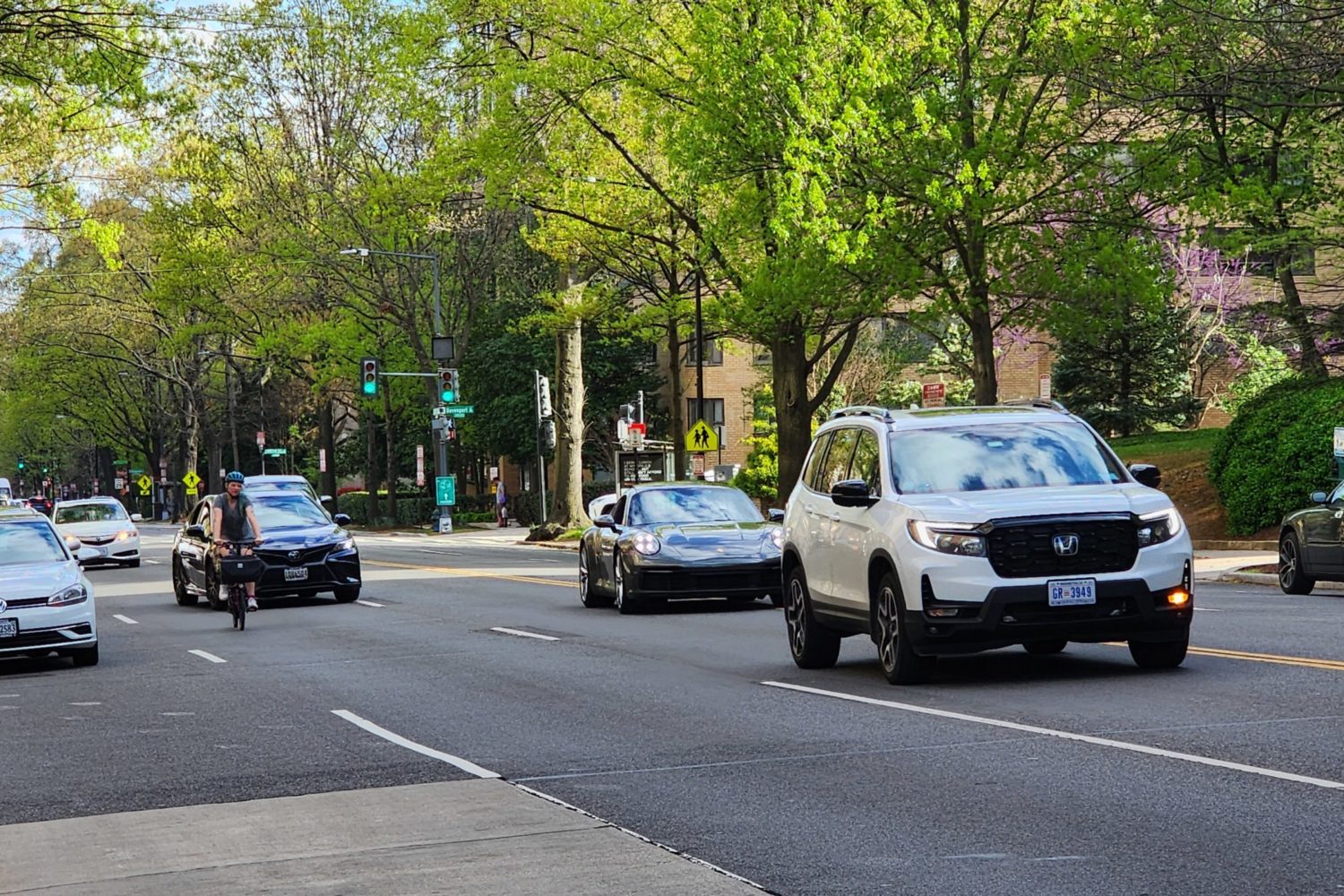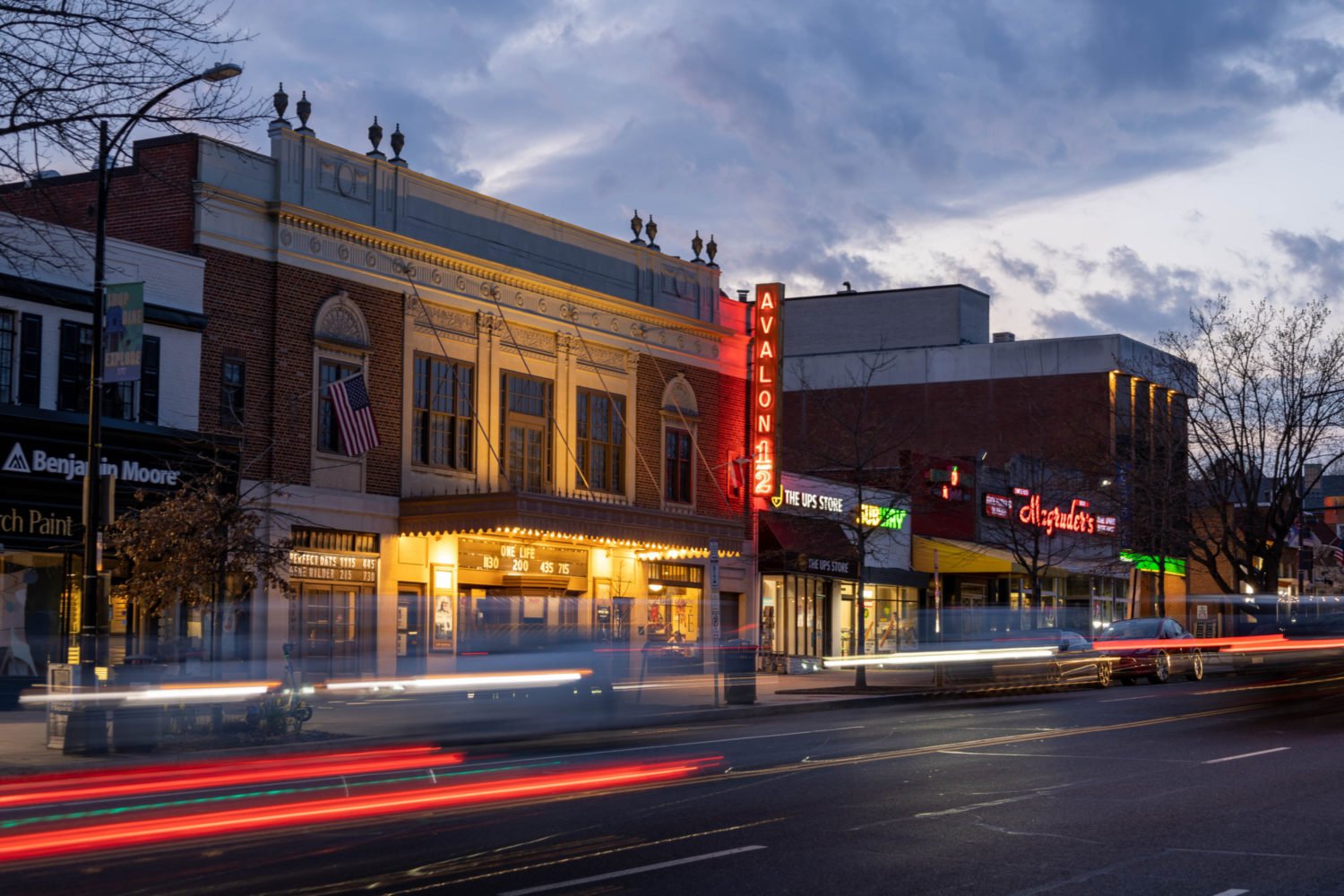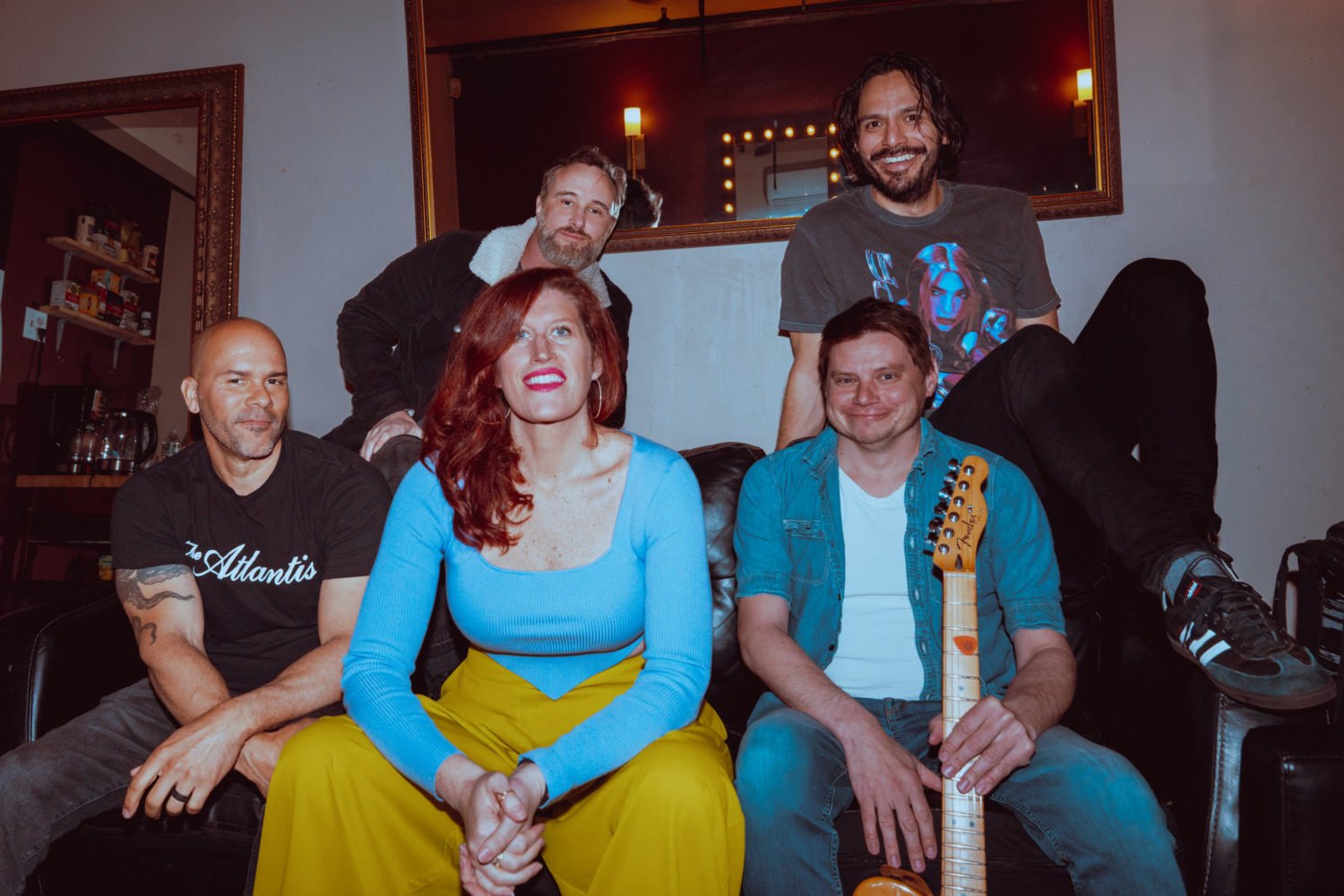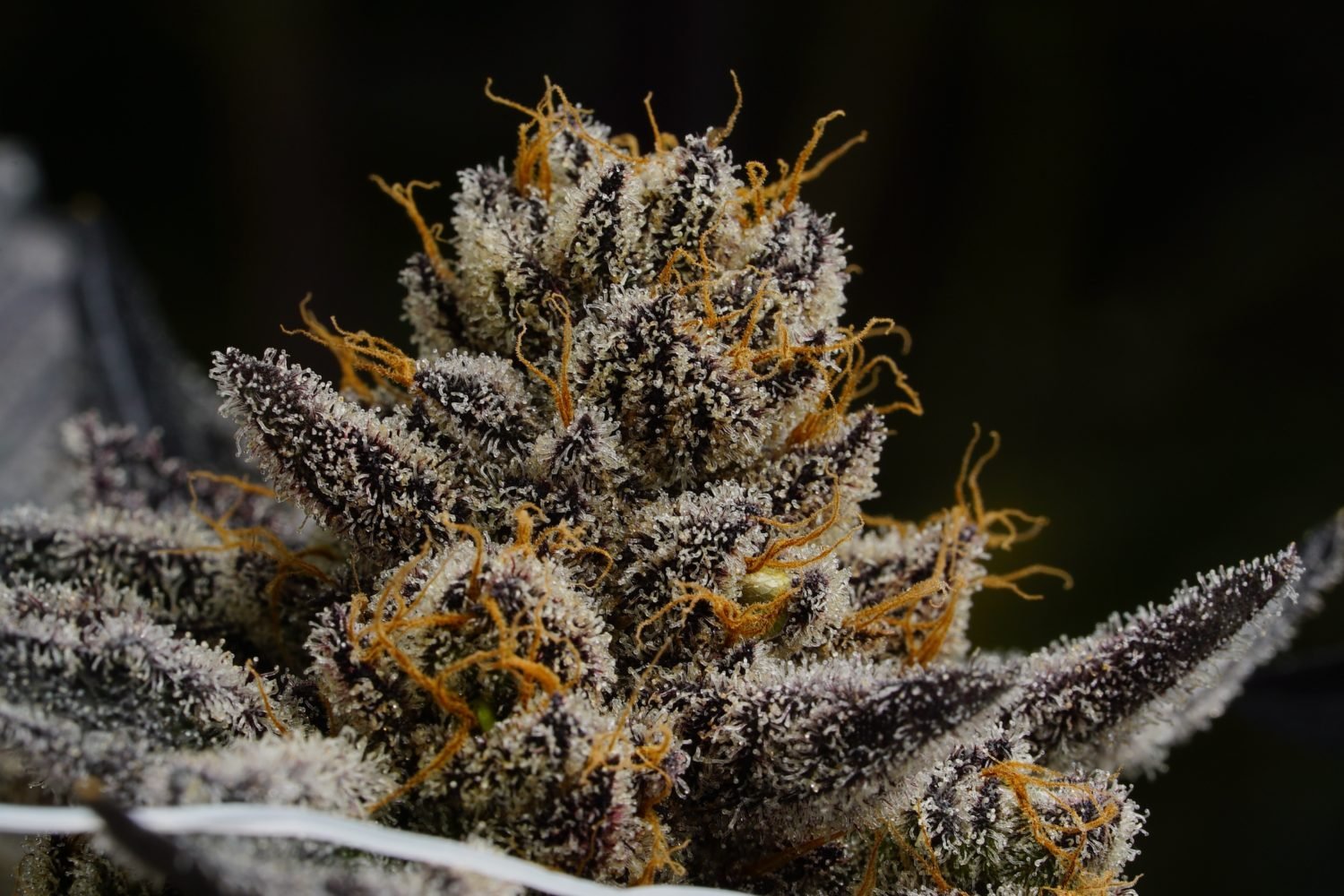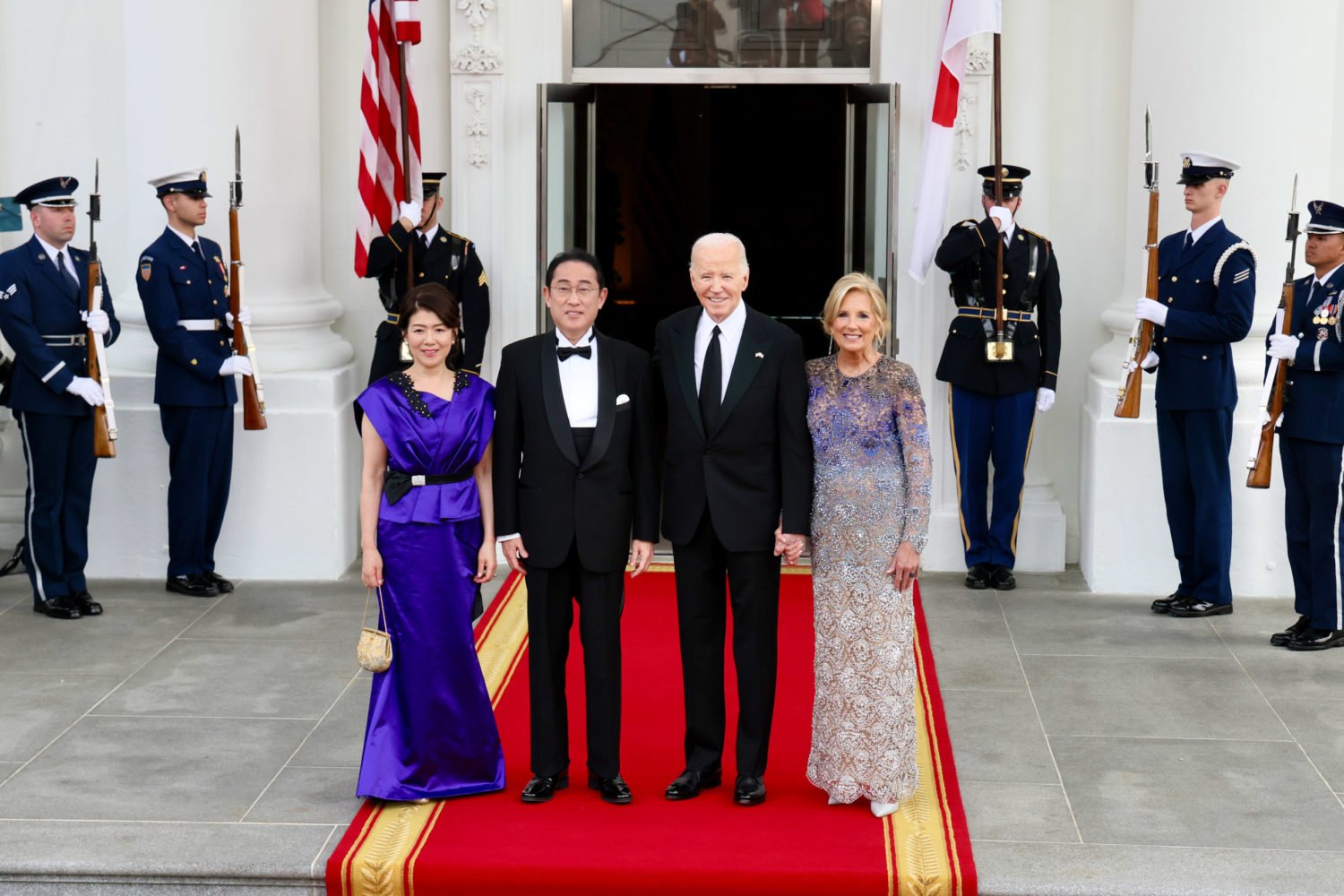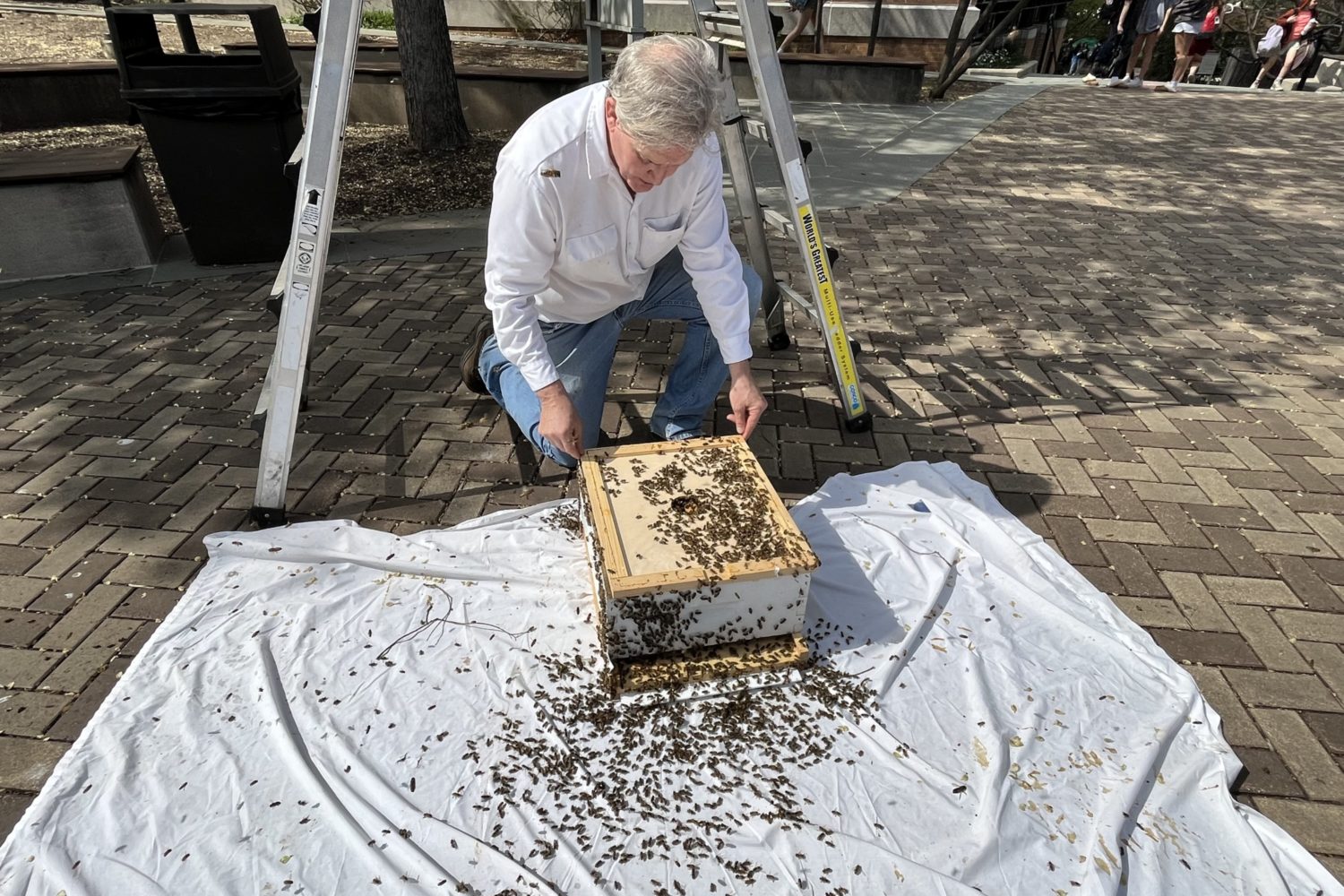Nothing exemplifies the classic American meal more than a steak dinner, particularly one enjoyed at a great steakhouse. Yes, family and friends look forward to the conviviality of a backyard cookout, but a truly great steak is best left to the professionals.
You can buy very good beef from a butcher, but it doesn't match the tenderness and flavor of that served at a top-shelf steakhouse. The US Department of Agriculture grades beef as Select, Choice, or Prime, according to the red color of its meat and the amount of fat or "marbling" throughout the steak. So if you buy a steak from a butcher that bears a purple USDA Prime stamp, why isn't it as good as the one you last enjoyed at a premium steakhouse?
For several reasons: In 1976 the USDA decreased the amount of marbling it requires for its top grades of beef, so that Good was elevated to Choice, and Choice was promoted to Prime. USDA Prime represents 2 to 3 percent of annual production. Purchasers for great steakhouses collaborate with purveyors to find Prime beef with marbling that matches that of the Prime of yore. Although it is an unofficial classification, steakhouses refer to beef with this high content of interior fat as either Top Prime or Selected Prime. Beef of this quality won't be found outside of great steakhouses.
The importance of the interior fat? The fat bastes a steak from its interior to ensure its juiciness and conveys the palate-coating, beefy flavor of a Top Prime steak. The tenderness of a New York strip or a bone-in rib eye at a top steakhouse is the result of dry-aging–whole cuts of beef are stored in a temperature- and humidity-controlled room for three to six weeks. With dry-aging, enzymes break down the lean connective tissue of a steak, therefore tenderizing it and producing the "nutty" flavor characteristic of dry-aged beef.
Cooking equipment is also a consideration: While a gas or wood-fired grill may be the choice of backyard cookouts and French restaurants, many top steakhouses use broilers that produce 1,600 to 1,800 degrees Fahrenheit of searing heat to create a crunchy, crusted exterior.
About 20 years ago, when Morton's of Chicago opened it first local branch in Georgetown, the most popular steakhouse cuts were filet mignon, New York strip, and prime rib. Morton's introduced the pleasures of bone-in beef with its fine porterhouse steak. The cut was a source of double pleasure: a tender filet and a firmer, beefier strip sirloin. The porterhouse grew in popularity until it became the house signature, as it always had been at the Chicago original. What makes a porterhouse greater than the sum of its parts–a strip steak and a filet–is the bone that not only separates the two cuts but also imbues each portion with a flavor richer than that of a boneless steak.
A filet mignon trades off intensity of flavor for tenderness. Steakhouses love diners who order filets because, despite its reputation for being costly, it is the most profitable cut on the menu. Cut from a muscle that is underexercised, and the least marbled cut among premium steaks, it requires no dry-aging to make it tender; a less-expensive USDA Choice filet is as tender as a USDA Prime filet, so many steakhouses feel there's no need to offer the more expensive grade.
One finding of this survey is that a bone-in filet gets such a boost in flavor that it deserves a place with such wonderful steaks as the porterhouse and the bone-in rib eye. Michael Sternberg of Sam & Harry's and the Caucus Room gets credit for bringing the bone-in filet to Washington. Sternberg, who began his restaurant career at the original Morton's in Chicago and came to Washington as the first general manager of the Georgetown Morton's, has dismissed boneless filets as "a lady's cut." But he has succeeded in getting porterhouse and bone-in-rib-eye fans to order–and confess to enjoying–his signature bone-in filet.
Among the bone-in steaks, the connoisseur's choice is the bone-in rib eye. Ten years ago, it could be found on only one or two steakhouse menus–once again, Sam & Harry's was a trendsetter. This cut has the richest content of fat. Cut from either USDA Prime or Choice, it can be every bit as tender as a filet but far richer in flavor.
Several steakhouses in this survey of bone-in steaks have multiple locations; the addresses given are where the meals were eaten.
Bobby Van's Steakhouse (809 15th St., NW; 202-589-0060). Porterhouse for two, $69; T-bone, $34.95; bone-in rib eye, $34.95; house salad, $7; sides for two, $6.50 to $9.50.
The porterhouse for two served here was not merely inspired by the legendary steak served at Peter Luger, a 19th-century landmark that is the most famous steakhouse in the country, it is a carbon copy of its New York counterpart: Bobby Van's purchases its USDA Prime short loins from Peter Luger's purveyor, ages them in-house for six weeks, then breaks them down into porterhouses and T-bones. The process not only produces tender steaks, it also imbues the meat with nutty, dry-aged flavor. The kitchen follows the Peter Luger tradition of presenting the steak sliced and reassembled on either side of its bone. Deliciously crusted and moistened by its natural juice, it is exquisite.
Bobby Van's T-bone is far richer in flavor than other restaurants' porterhouses. The only difference is that the T-bone has a smaller portion of filet.
If you can't find someone to share the porterhouse with you, the hidden gem at Bobby Van's is a bone-in rib eye. Not only does it have the tenderness associated with the heavily marbled cut, its five weeks of dry-aging give it a wonderful flavor. Along with that of the Prime Rib, it shares the top spot as the best bone-in rib eye in this survey.
The house salad–a mix of baby lettuces, sliced Roma tomatoes, and onions, sprinkled with crumbled bleu cheese and tossed with a shallot vinaigrette–is pleasant enough. Better to begin with the competent Caesar salad or an old-fashioned wedge of iceberg with quartered tomatoes and a reckless slathering of bleu-cheese dressing.
The sides for two are excellent: perfectly crisp cottage fries; a golden cake of hash browns; a splendid combination plate of fried zucchini, lacy fried onions, and cottage fries; and classic creamed spinach. Much to his credit, chef Will Biscoe, a graduate of L'Academie de Cuisine, understands the importance of maintaining the quality of his side dishes to provide a worthy complement to his national-class steaks.
Diners looking for familiar, big-ticket wines from California or France will find them on Bobby Van's list, which is as lacking in bargains as it is in personality.
Capital Grille (601 Pennsylvania Ave., NW; 202-737-6200). Porterhouse, $32.95; Delmonico (bone-in rib eye), $27.95; house salad, $5.75; sides, $3.95 to $7.95.
The phrase "USDA Prime" is nowhere to be found on Capital Grille's menu, and according to one waiter, the only cut of Prime beef served here is the bone-in rib eye, though he later fudged that claim by saying that the grade "ranged from Choice to Prime." It is a handsome rib of beef with an appetizing exterior crust. It has the firmest texture of any rib eye in this survey, perhaps because, according to a waiter, the Grille's beef is aged two weeks as opposed to the three-week minimum at most of the other top-shelf steakhouses. It has a pleasantly beefy flavor but lacks the richness that comes from longer dry-aging.
The consensus among waiters and managers at the Capital Grille is that their porterhouse is a USDA Choice steak that has been dry-aged in-house for 14 days. But it tastes no better than a carefully selected steak bought from a specialty butcher, so even at $32.95–a couple of dollars less than the best single-portion porterhouses on this survey–it is no bargain. If you are doing business over a steak at lhe Capital Grille, the rib eye is the recommended choice.
The house salad is romaine brightened by a small quantity of radicchio and a better-than-average quartered tomato with a nicely balanced vinaigrette and a generous sprinkling of crumbled bleu cheese.
The lyonnaise potatoes resemble nothing that you might encounter in France, but there is a certain appeal to this crunchy mixture of unpeeled potatoes with caramelized onions.
Capital Grille's extensive wine list includes some good values, such as Domaine Drouhin Pinot Noir and Zinfandels from Ravenswood and Rosenbloom.
The Caucus Room (401 Ninth St., NW; 202-393-1300). Bone-in rib eye, $35; house salad, $8; sides, $4.95 to $6.
From its opening day, this Sam & Harry's offshoot championed steaks served on the bone. It shares its Chicago purveyor of USDA Prime steaks with its parent, so one can expect similar quality at both restaurants. The Caucus Room does not offer a porterhouse steak, preferring to divide that cut into a strip on the bone and a filet on the bone.
A bone-in rib eye was sampled here. Ordered medium-rare, it had a nearly black exterior made unattractive by several fissures across its surface, as if the broiler's heat–and the cook's sense of timing–had caused it to split apart. The interior of the steak was mostly raw, which meant it had to be sawed and pulled into pieces rather than neatly sliced. Although the waiter said the steak was aged for three weeks, it showed no trace of age in its aroma or its flavor, even in the crisp bits of meat sliced from either side of the rib bone. The steak was served with a dollop of horseradish-flavored mashed potatoes.
The better of the two house salads is Haley's Chopped Salad, a wonderfully old-fashioned bowl of cold crunchiness dressed with a mustard vinaigrette and scattered with Maytag bleu cheese.
The wine list at the Caucus Room has enough familiar labels to inspire confidence in the casual wine drinker, plus plenty of adventurous choices from both California and France. For single diners, the list offers a fine choice of half bottles.
Fleming's (1960-A Chain Bridge Rd, McLean; 703-442-8384). Porterhouse, $34.95; bone-in rib eye, $31.95; house salad: $5; sides for two, $4.50 to $6.95.
The rich flavor and tenderness of Fleming's bone-in rib eye lends credence to the menu claim that the steaks at this West Coast chain are "aged up to four weeks for flavor and texture." The porterhouse is better, in flavor and tenderness, than some of its counterparts at chains with more established names. Both steaks were incisively seasoned with salt and pepper and served on plates slicked with melted butter. For a relative newcomer among top-shelf steakhouses–it has been here for three years–Fleming's makes an impressive showing.
The house salad is an old-fashioned mix of iceberg, romaine, tomatoes, and croutons, all ladled over with a fine bleu-cheese dressing. It would be even better without its garnish of candied walnuts. A good alternative is a wonderfully crunchy chopped salad whose greens are textured with a fine mince of salami, bacon, Monterey Jack cheese, olives, tomatoes, and cucumbers.
Sides for two were a mixed success: The crunchy shoestring fries were flawless, but the cheesy Creamed spinach was overwhelmed by its sauce.
Fleming's offers a dizzying number of wines by the glass, a list of bottles on which a moderately priced choice is in the upper-$40 range, and a reserve list meant to let you know what the last of the dot-com millionaires are drinking.
J.R.'s Stockyards Inn (8130 Watson St., McLean; 703-893-3390). Porterhouse, $22.95; house salad, $4.75 at lunch, complimentary with all main courses at dinner; sides, $1.75 to $3.75.
From the weathered red paint on its barnlike exterior to the crock of cheddar spread that prefaces the meal, J.R.'s Stockyards Inn is a trip down memory lane. Unchanged–except for its prices–since it opened in 1978, it is a reminder of what area steakhouses were like before the prime-beef chains from Chicago, New York, New Orleans, and California arrived.
The porterhouse, served sizzling on a superheated cast-iron griddle-pan, arrives cooked medium-rare. Its exterior has been charred on a grill, giving it the flavor of a backyard steak cooked on a grill that experiences frequent flare-ups. It is impressively tender, its sirloin side almost as tender as its filet. Although a phone inquiry as to whether J.R.'s steaks were Choice or Prime elicited a response of "Prime," neither the waitress nor the hostess was quite sure of the grade of the beef served. And while three weeks of aging is claimed, there was little hint of the characteristic aged flavor, even close to the bone. Still, this porterhouse is a clear cut above supermarket beef in both tenderness and flavor. There is sufficient quality to make its $22.95 price a bargain compared with a number of the second-tier $34.95 porterhouses sampled in this survey.
J.R.'s house salad is a classic, the sort you would have been served in a steakhouse 50 years ago: a toss of romaine, cucumber slices, halved cherry tomatoes, and croutons, dressed with a good bleu-cheese dressing.
Ignore what the menu optimistically calls Steak Fries–they are a disappointing plate of what seems like yesterday's baked potatoes, quartered and not particularly well fried. Choose instead a baked potato and a plate of the kitchen's old-fashioned onion rings, wide-cut, battered, and properly fried.
To see how far wine lists in today's premium steakhouses have come–or gone–since the 1970s, check J.R.'s half-page list, evenly divided between reds and whites. There is a Clos du Bois Merlot that would be a good complement to the porterhouse, but on a recent Sunday, J.R.'s was featuring the stunning St. Francis "Old Vines" Zinfandel 2000 for a mere $30. With the same vintage selling elsewhere for well over $50, an evening of nostalgia at J.R.'s might seem a very good idea.
Morton's of Chicago (1050 Connecticut Ave., NW; 202-955-5997; 3251 Prospect St., NW; 202-342-6258). Double porterhouse, $69.90; porterhouse, $34.95; house salad, $6.95; sides, $3.95 to $7.95.
If there was anything more disheartening than the wan exterior of the double porterhouse served at the Connecticut Avenue Morton's, it was the tableside carving: Rather than slicing the strip and the filet and placing the meat in overlapping slices on their respective sides of the bone, the manager separated the two pieces of meat from the bone, cut each into two chunks, and plopped them on the diners' plates. This is no way to treat this costly slab of beef, which was no more tender than a good supermarket steak and yielded no trace of dry-aged flavor.
A porterhouse for one sampled several weeks later at the Georgetown branch of Morton's was similarly disappointing: Unlike those precisely cut bone-in triangles of prime beef that long exemplified Morton's signature steak, this was a curiously gnarled piece of meat for the $34.95 asking price. With a slightly rubbery strip side and a dry, underflavored filet, its texture reflected its outward appearance, which was as beige as the double porterhouse at Connecticut and L. What has happened to the wonderful charred exterior that was the hallmark of Morton's porterhouses?
Morton's house salad–ribbons of romaine heavily coated with a creamy bleu-cheese dressing, scattered with chopped hard-boiled egg, and topped with a pair of crossed anchovy filets–would be more enjoyable were not served at such a frigid temperature. The Caesar salad, served just as cold, is just as dull.
The house version of hash-brown potatoes is golden mass of crunchy potato shreds reminiscent of a French straw-potato pancake. Depending on when you get it–it is made ahead of serving and kept warm–it can be either quite good or rather stale. The mashed potatoes can be improved at table by adding a great deal of butter. The kitchen's rendition of creamed spinach honors this steakhouse classic.
Although Morton's wine list lacks the depth of those at the Prime Rib, Sam & Harry's, and Smith & Wollensky, it offers a serviceable collection of familiar labels from California and abroad.
The Palm (1225 19th St., NW; 202-293-9091). Porterhouse, $38; bone-in rib eye, $31; house salad, $6; sides, $6 to $7.50.
The best steak in a steakhouse is the one upon which its reputation is built. One goes to Peter Luger and Bobby Van's for a porterhouse, to the Prime Rib for a bone-in rib eye, and to the Palm for a New York strip, particularly the New York strip for two. Good as it is, the Palm's wonderful strip steak has been eclipsed by a bone-in rib eye that gives those served at the Prime Rib and Bobby Van's a run for their money. It is a tender, beefy cut that the Palm's savvy waiters have been recommending to their regular patrons.
Go to the Palm to enjoy one of the best New York strips or rib eyes in town. That those are the steaks to order is proven by the oversize, 28-ounce porterhouse; sampled several times, it is a chewy, underflavored disappointment.
The Palm's house salad is a mixture of romaine and iceberg given a pleasant jolt of bitterness by a few torn leaves of radicchio. Its dressing of choice is the house vinaigrette, reinforced by a scattering of crumbled bleu cheese. It is a coarse, crunchy, unprepossesing salad–a perfect fit for the Palm.
When fresh out of the fryer, the Palm's cottage fries–interpreted as house-made potato chips–are nothing short of wonderful, as are the thinly sliced, exquisitely crisp fried onions. Beware the temptation to order hash browns, a dark-crusted, oily plate of steamy potato fragments that is the worst interpretation of hash browns on the steakhouse circuit. And the Palm's creamed spinach is nothing more than average.
One should be prepared to spend close to $40 for the least expensive reds on the Palm's utilitarian wine list. Some of the appealing wines in that price range–the Steele Pinot Noir and the Francis Coppola Diamond Mountain Merlot–are excessively marked up.
The Prime Rib (2020 K St., NW; 202-466-8811). Bone-in rib eye, $34.95; house salad, $6.50; sides, $4.50 to $6.95.
This K Street landmark's prime rib is listed on the menu as "Roasted Ribs of Prime Beef" because it starts out as a rack of USDA Prime ribs of beef, which results in servings of splendid roast beef that upstage the restaurant's excellent dry-aged New York strip steaks.
But those whole ribs of beef also produce the Prime Rib's signature steak, one of the great bone-in steaks around. Unlike many rib eyes, which are pre-portioned by meat purveyors, owner C.P. (Buzz) Beler cuts his rib eye in-house, choosing the largest ribs from the roast, then using the remainder of the rack for the generous cut of prime rib served at lunch.
The portion is so large that a single steak makes an ample meal for two diners with good appetites. If you plan to share the signature steak–or test your appetite against it one-on-one–ask that it be carved in the kitchen. The result is splendid plate of dark-rimmed slices of pink beef fanned out against the lightly charred bone. As tender as a filet, it is wonderfully beefy, edged with traces of the nutty flavor from dry-aging.
Tossed at tableside when ordered in two or more portions, the Prime Rib's house salad may be the best of its category. The creation of the Prime Rib's late co-owner, Nick Beler–who expanded on a salad he enjoyed at Chiapparelli's in Baltimore's Little Italy–it retains the exuberance of its Italian-American origins in the sting of its pickled pepperoncini and its dusting of Parmesan, while the inclusion of quartered hard-boiled eggs and the balance of its complex dressing lend it an elegance that matches the supper-club setting.
The Prime Rib's sides are dependably excellent: A buttery potato purée and what may be the best creamed spinach at any local steakhouse prove that this kitchen pays as much attention to the preparation of its sides as to the precise cooking of its beef. At lunch, the diner's choice of any two sides is included in the price of the main course.
The wine list is a model of fair pricing, and not just because of the under-$30 house selections featured at the front of the book or its "Thirty Under $40" page. Jim Ross, who has been in charge of the list since the restaurant's early days, not only manages to offer such hard-to-find gems as Spottswoode Cabernet Sauvignon but also promotes many of his own discoveries by offering them at low markup.
Ruth's Chris Steak House (7315 Wisconsin Ave., Bethesda; 301-652-7877). Porterhouse for two, $75; Cowboy steak (bone-in rib eye), $35.95; house salad, $3.95; sides, $5.95.
In years past, the porterhouse for two at several of the local Ruth's Chris branches was a gorgeous eyeful–an almost-two-inch-thick triangle of USDA Prime beef caramelized to a crusty black-brown in a superheated broiler, carved, and reassembled on the bone in thick slices with appetizingly red interiors on a platter of sizzling butter. Despite the bath of drawn butter, these glistening slices of beef were inexplicably dry and dull-flavored.
Past experiences at Ruth's Chris did not create high expectations for a meal at the Bethesda location. But the porterhouse for two–which more than matched its dark-crusted, medium-rare appearance with a rich flavor–convinced two former Ruth's Chris doubters. At this branch they enjoyed a sensationally good porterhouse steak.
After the success of the porterhouse for two, the Cowboy rib eye was a disappointment: It had a rubbery texture and lacked any richness of flavor.
The Caesar salad at this Ruth's Chris is a plate of chopped romaine tossed with a dull dressing that begs for the punch of lemon juice that sparks the classic Caesar dressing. A better choice to start with is a pleasant house salad of roughly chopped romaine and iceberg with onions and cherry tomatoes, all tossed in a balsamic vinaigrette. Ruth's Chop salad is a study in excess–the crunch of iceberg, bacon, spinach, hearts of palm, and olives has texture enough without the addition of room-temperature deep-fried onion rings.
The best choice of potatoes at this Ruth's Chris is a cone of wonderfully crisp shoestring fries. The julienne fries are so fat-laden it is hard to believe they came out of the same kitchen. The creamed spinach could do with a little less nutmeg.
Given the strictures of Montgomery County's wine system, the wine list is surprising for its length and breadth as well as for the competitiveness of its prices.
Sam & Harry's (1200 19th St, NW; 202-296-4333). Porterhouse, $33.95; bone-in filet, $33.95; house salad, $6.95; sides, $4.95 to $5.95.
Michael Sternberg, who came from Chicago in the 1980s as the manager of the first local branch of Morton's, teamed up with Larry Work in the early '90s to open Sam & Harry's, a steakhouse intended to go mano a mano with his former employer for porterhouse primacy. After a rough start, the partners found a Chicago purveyor that supplied them with porterhouses that matched Morton's best. More important, Sternberg and Work pioneered the bone-in cuts now featured in our top-shelf steakhouses–bone-in rib eye, bone-in strip, and bone-in filet.
The porterhouse sampled at Sam & Harry's lacked a pronounced char and was much closer to rare than the medium-rare requested. Undercooked, it was a chore to slice. Given that and its lack of dry-aged flavor, it was a disappointing steak.
The bone-in filet, which had to be ordered twice–it was refused the first time because it was presented carved in thin, overlapping slices without its bone–was preferable. The bone provides a considerable boost in flavor, making Sam & Harry's bone-in filet the most flavorsome "lady's cut" available in local steakhouses. But its presentation needs to be changed: Serving this wonderful cut of beef on a bed of chunked potatoes pan-fried with onions is crude. The kitchen would do well to return to the steak's original garnish, a double spoonful of sautéed button mushrooms lightly bound in demi-glace.
The house salad, a chilled mixture of chopped romaine, diced peppers, kernels of corn, and red onions, might be better if served at room temperature. The alternative, a once-wonderful salad of spinach scattered with sliced raw mushrooms and tossed with a warm bacon dressing, was dull.
The once lumpy mashed potatoes are now a velvety purée that would be even better with a bit more butter. The creamed spinach is one of the better local versions.
Sam & Harry's wine list is short on bargains, but bottles have been selected at every price level so one can order an affordable yet unfamiliar bottle with confidence.
Smith & Wollensky (1112 19th St., NW; 202-466-1100). T-Bone, $35; porterhouse for two, $64; Colorado (bone-in rib eye), $34; house salad, $9; sides for two: $8.
What they call a T-bone here–to differentiate it from a double-cut porterhouse meant to serve two–is actually a porterhouse equal in size to the single-serving porterhouses at Morton's and Sam & Harry's. This tender, top-Prime steak had a great deal more of the nutty flavor of well-aged beef than one usually finds in any bone-in cut at Smith & Wollensky. As at the original restaurant in Manhattan, this branch dry-ages its beef for 21 days, not long enough to produce a pronounced aged flavor. The porterhouse for two, impressively carved at tableside and reassembled in overlapping slices on either side of the massive bone, was a splendidly juicy steak with an impressively dark crust and a rich, beefy flavor. What it lacked in true dry-aged flavor could have been remedied by allowing the short loin from whence it is cut to spend one more week in the aging room.
Smith & Wollensky's bone-in rib eye was an example of why the cut is the favorite of beef connoisseurs: Its deliciously crusty exterior sealed in the juice that flooded the plate as the steak was cut. It cut like a filet but had the beefy richness that comes from leaving the bone in. Like most of the steaks here, this one hinted at dry-aged flavor at its outer edges and on the thin strip of well-done meat on either side of the rib bone.
The Wollensky Salad–a toss of romaine with creamy dressing, warm cubes of sautéed potato, batons of bacon, and pickled button mushrooms–is a jumble of flavors and textures whose dressing fails to bring all the elements together. A slightly scorched exterior has marred the kitchen's pancake-style hash-brown potatoes, but the potato purée that is the kitchen's version of mashed potatoes and the rich creamed spinach are among the best sides to be found at any local steakhouse.
Smith & Wollensky's wine list is a collection of vintages that seems to be revised every two to three weeks. Its strengths are blue-chip California vineyards and classified Bordeaux, which means spending $50 to $60 for a domestic wine worthy of the very good steaks or well over $100 for some of the Bordeaux that are good values relative to their current market prices. For pleasant drinking in the $30-to-$40 range, ask for the list offered at Wollensky's Grill, also available in the main dining rooms if you ask.
Steakhouse Favorites
PORTERHOUSE: Bobby Van's, Fleming's, Ruth's Chris, Smith & Wollensky
RIB EYE: Bobby Van's, Fleming's, Palm, the Prime Rib, Smith & Wollensky
NEW YORK STRIP: The Palm, Prime Rib
BONE-IN FILET: Sam & Harry's
SALADS: Capital Grille, Caucus Room, the Prime Rib
POTATOES: Bobby Van's, the Palm, the Prime Rib
CREAMED SPINACH: Bobby Van's, Morton's, the Prime Rib, Sam & Harry's, Smith & Wollensky
WINE LIST: Caucus Room, the Prime Rib, Ruth's Chris, Sam & Harry's, Smith & Wollensky











